After several days of beautiful hot sunshine and clear skies, the weather turned cooler and more importantly overcast. This was ideal for my first fishing trip to catch trout on the River Alwen; a wild tributary of the Welsh Dee (Corwen & District Angling Club’s beat). My son, George, decided to join me and we met a friend, Simon, at the Goat Inn just after 10 am.
Fishing for trout on the River Alwen – Corwen & District Angling Club’s beat.
I decided to travel light and fish the dry fly, because I wanted to cover as much river as possible during this initial visit; George and Simon also adopted this strategy. Therefore, I set up my Redington 9ft 5# rod with 12ft 7x tapered leaded to fish a double-dry setup (sight fly: size 12, Elk Hair caddis; point fly: size 18, Griffiths gnat).
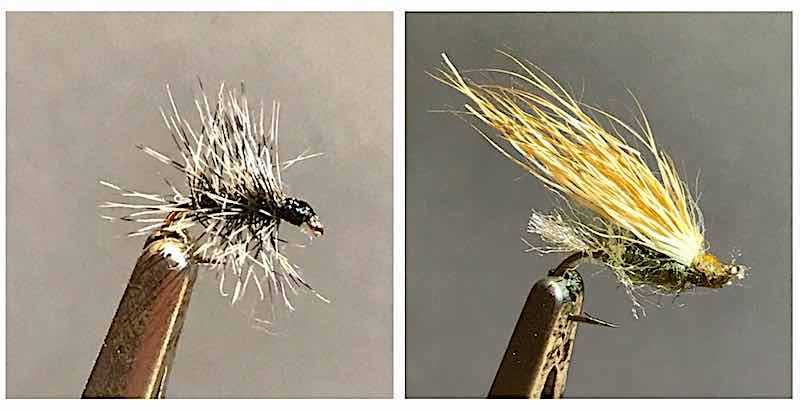
Access to the river wasn’t straight forward but eventually we found the River Ceirw and walked downstream to the junction with the River Alwen (red route on the following Google map).
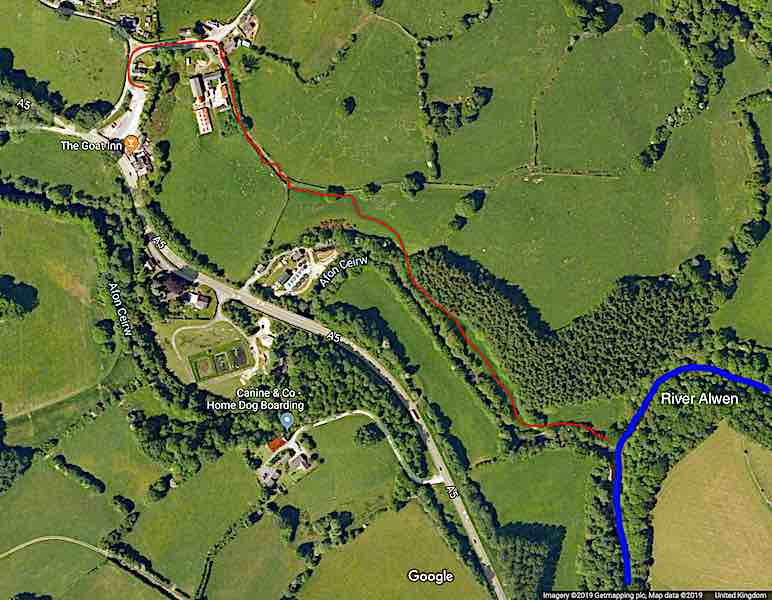
Simon fished the first pool of the Alwen above the Ceirw, while I fished the junction pool with the Ceirw. George was lagging behind, tempted by fishing the Ceirw.
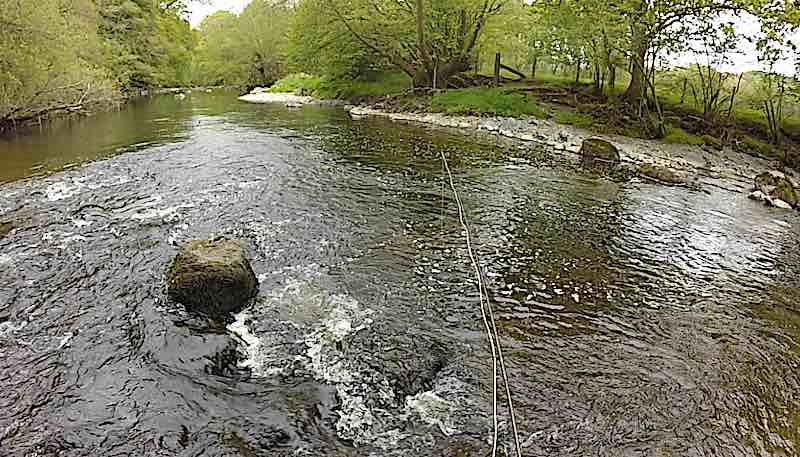
There were a couple of fish rising in the foam-line, so I targeted these with the dry fly. My first cast produced a take, but the fish threw the hook almost immediately. However, a couple of casts later, I connected with the next take and guided my first Alwen brown trout to the net; it had fallen for the Elk Hair caddis.

I was unable to reach the other rising fish because the overhanging trees were restricting my casting. Therefore, I walked up river to see how Simon was getting on. He was stalking rising fish, so I quietly left him to it and headed up river in search of the next fishable pool.
For the next two hundred yards the river tumbles down around large rocks, which I couldn’t fish with the dry fly. A Tenkara fishing rod would be needed to fish this section. Above this section, I reached the next promising pool that I could fish with the dry fly.

Fishing up the pool didn’t produce any takes, until I reached the broken water at its head. Here a decent trout surfaced, devoured the caddis and took off for cover. After getting it under control I guided a lovely 12″ brownie to the net; a good size wild trout for such a small stream.
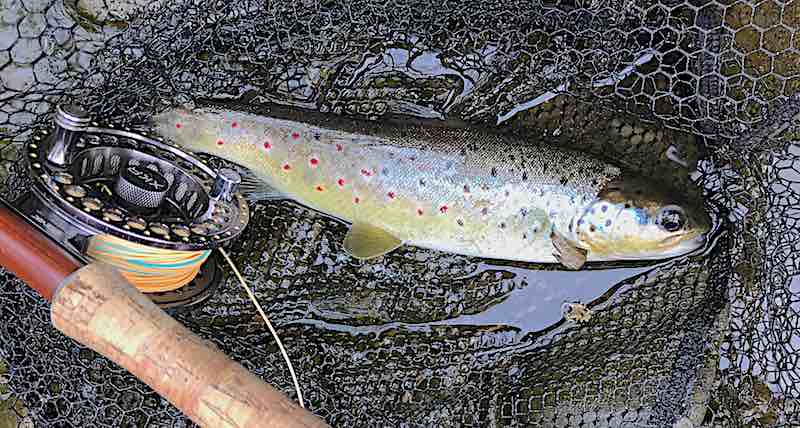
Moving further upriver I came to a long tree-lined pool, where the deeper water was close to the near bank. From a crouching position on the bank, I fished the dry fly through the deeper water as best I could but without any luck.
Eventually, I had to get into the river and carefully waded upstream to fish the area behind a tree snag at the head of the pool. As the flies drifted alongside the snag, there was a rise and the Giffiths gnat disappeared. After a short struggle, a small wild brown trout was guided to the net.

Fishing my way up through a few rocky runs, I eventually reached the next deep pool that surely held a trout or two. However, surprisingly fishing the pool with the dry fly didn’t produce any takes. Maybe, a different approach would have yielded results; this is a challenge for my next fishing trip here.
It was now well passed lunch time, so I went to see how the fishing was going for Simon and George. They’d both also been successful at catching some lovely Alwen brown trout on dry flies. Therefore, we went back to the car for a spot of lunch and to decide where to fish for the remainder of the day.
Trout fly fishing on the Berwyn Arms beat of the Welsh Dee
To finish our fishing trip, we fished Corwen & District Angling Club’s Berwyn Arms beat of the Welsh Dee, which Simon had not fished before and I’d not fished since last year.
By the car park, there were a few fish taking small dry flies and that is where Simon started fishing. George, on the other hand, went up river to fish through Taylor’s Pool for salmon; which at this time of year on the Welsh Dee generally means casting practice!
I decided on fishing a team of wet flies spaced 3ft apart on 3lbs copolymer (point: size 14, March Brown spider; middle dropper: size 14, black hopper; top dropper: size 16, wet medium olive).
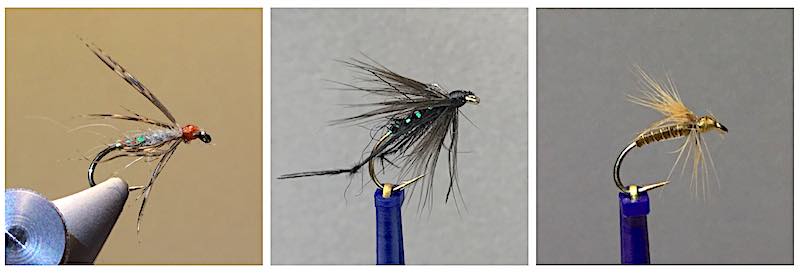
While Simon was still fishing the glide with the dry fly, I headed up river to fish the glide above Taylor’s Pool. At the head of the glide, a few small fish were rising close to the far bank, but I couldn’t make out what flies they were taking.
Fishing down through run with the wet flies produced three small trout, all of which fell for the medium olive on the top dropper.
Afterwards, I walked down river to see how George was getting on fishing Taylor’s Pool. Unsurprisingly, he’d not had anything on the salmon fly but had just caught a nice brown trout on a medium olive wet fly.
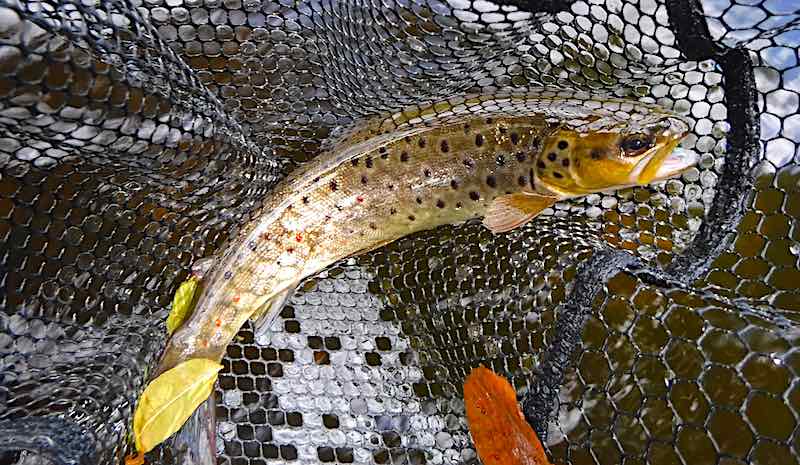
Further down river I met up with Simon, who’d caught a few small trout and just lost a big trout in the run below Taylor’s Pool. I’ve made a note where he hooked this fish because I will be going back to see if I can tempt it at a later date.
For the last hour I fished down through the run below Simon with the wet flies. This produced a couple of salmon parr and then a wild brown trout, which had taken the black hopper.
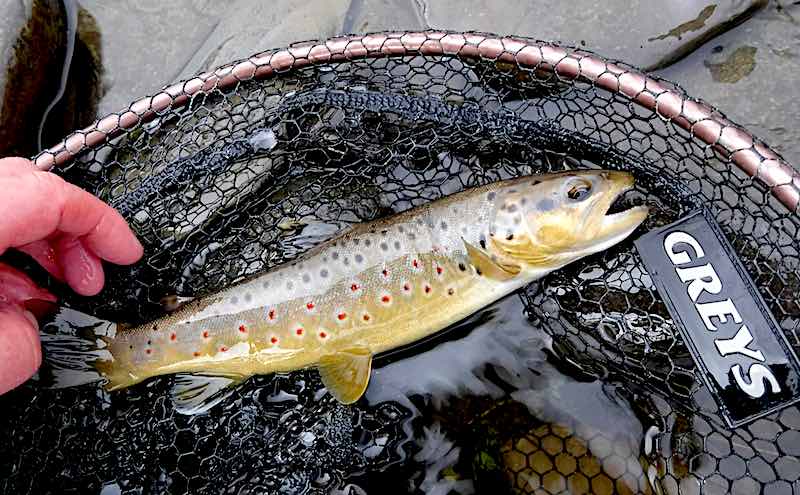
It was now time to head off home and drop the exchange tickets off before it got too late.
Overall, our first expedition to fish for brown trout on the River Alwen was a great success. It is a beautiful little river that holds some beautiful wild brown trout. I also suspect later in the year when there is more water in the river it will yield sea trout and maybe even the odd salmon.
In addition, it was great to get a bonus couple of hours trout fishing on Berwyn Arms beat of the Welsh Dee, which I will be visiting again during June/July in search of sea trout.
Tight lines until next time, Andrew
PS. Watch out for my next blog, which will cover my first attempts at fly fishing for pike on Llyn Trawsfynydd.
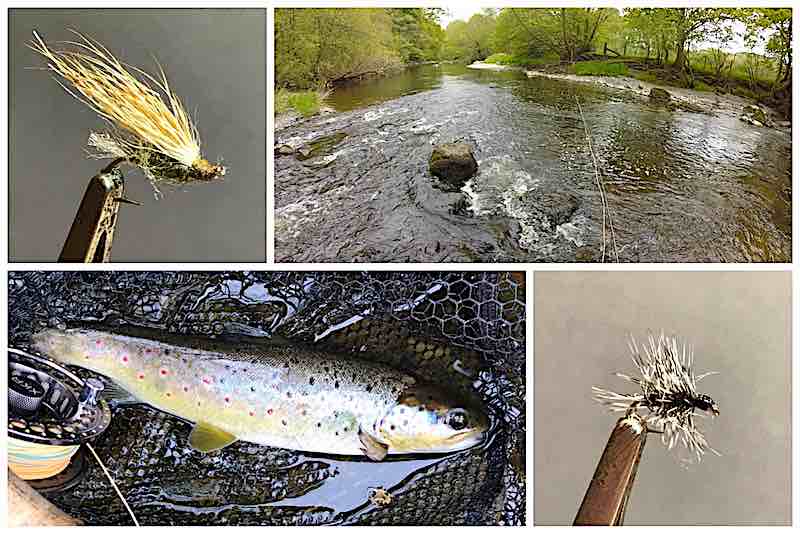
Another great blog with lots of useful information. I have noticed on your wet fly setup you space your flies 3ft apart. Can you fish on wet flies with less space apart?
Hi Tim,
Thanks for the comments. I find 3ft between the wet flies seems to give the best results for me. However, if I want to fish all three deeper without resorting to a sinking poly leader I will space them 18″ apart and put a heavy fly on the point to pull them down through the water. I hope this helps, Andrew
Always an interesting and informative read Andrew. As mentioned above I wouldn’t ordinarily space my flies 3’ apart but may give it go next time. Cheers.
Hi Paul,
Thanks for the comments. Let me know if you find fishing the flies further apart work any better for you.
Cheers, Andrew
Another good read Andrew with some interesting points
Thanks,
Thanks again for the comments
Hi. I think I’ll give the Welsh Dee a go myself sometime.
You won’t be disappointed, Andrew